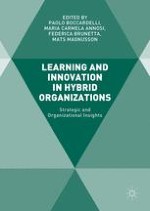2018 | OriginalPaper | Chapter
5. Investigating the Impact of Agile Methods on Learning and Innovation
Authors : Maria Carmela Annosi, Jens Hemphälä, Federica Brunetta
Published in: Learning and Innovation in Hybrid Organizations
Publisher: Springer International Publishing
Activate our intelligent search to find suitable subject content or patents.
Select sections of text to find matching patents with Artificial Intelligence. powered by
Select sections of text to find additional relevant content using AI-assisted search. powered by
